If you're looking for "how to create a PDF portfolio" or "create PDF portfolio" then you already know what a PDF portfolio is. So, I won't waste your time with pointless introductions.
I will, however, take a moment to dive into why you need a PDF portfolio before answering the "how." I want to drive home all the reasons so that you start creating one right after reading this article.
I'll also be listing a few examples of excellent PDF portfolios, all created with a tool that finds, collects, and backs up all your work samples for you. (Yes, ALL of them).
• Why even use PDF portfolios in the modern day?
• Examples of PDF portfolios that experts use
• How to create a portfolio (with a few clicks and no copy-pasting of your own work samples)
• Why Authory is the ideal PDF portfolio builder — automatic importing of all bylined content AND automatic backup of ALL your imported content
Why use PDF portfolios?
The PDF format is super handy. If you’re sending, say, word documents created and formatted on a Windows PC to someone using a Mac, there will be information loss. To view the documents, the recipient’s device must have the same tools you used to create them.
For example, if you send (as I often did) a Word document with writing in Arial font, my recipients would have to have the same font installed on their machine. If not, they would probably see some garbled form of what you sent. There’s also a chance that the document might not open at all.
PDF documents, however, open exactly as you send them on all computers — Windows, macOS, and even on mobile phones and tablets.
There’s more: you can combine multiple files into one PDF file, including images and even video. All the files can be in different formats, across different platforms, and yet, you can still combine them into a single PDF file, or a portfolio file comprising just PDFs. So, if you do have a portfolio, or are planning to make one, I suggest trying a portfolio PDF.
PDF portfolio examples for some inspiration
Dan Rosenbaum
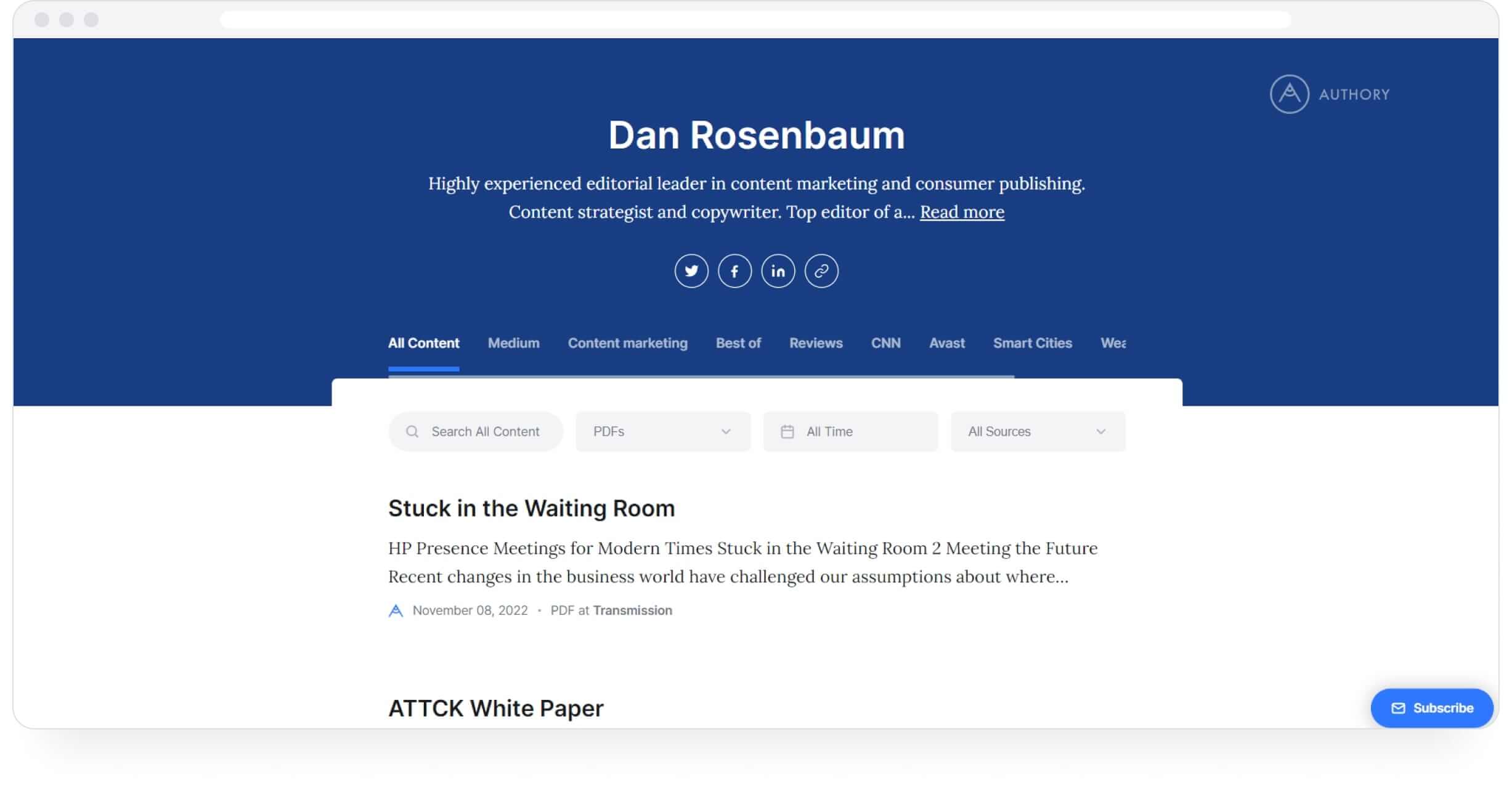
Dan carries years of experience as an expert editor in content marketing and consumer publishing circles. On top of that, he’s a content strategist and copywriter and edits half a dozen magazines and online assets. His skills involve ideating, implementing, and reorienting magazines and websites. Furthermore, his advocacy writing has won awards and obtained significant media experience.
Urvashi Aneja
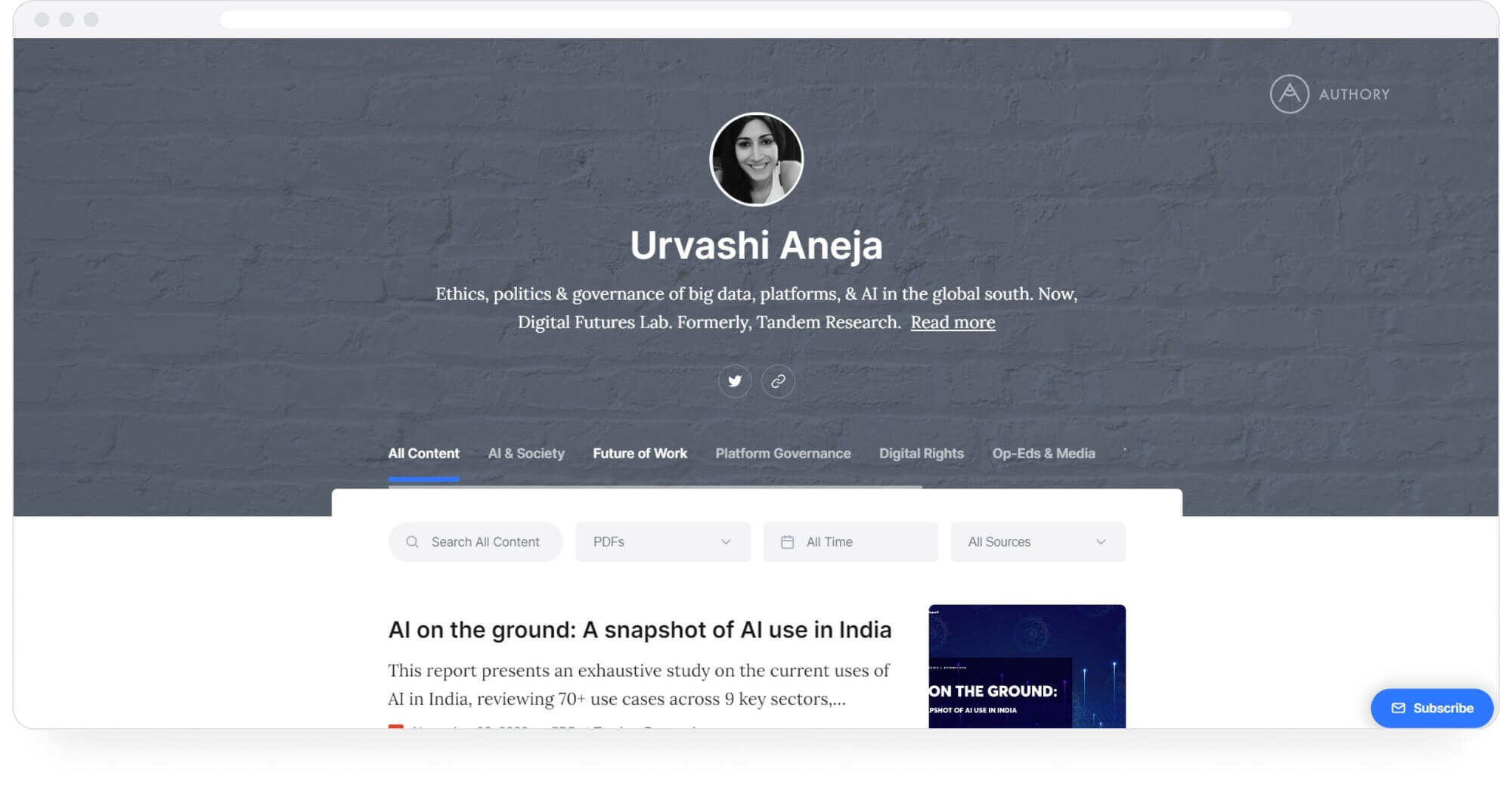
Urvashi studies the ethical and larger impact of AI, big tech, platform governance, and labor welfare in digital economies.
She has been the Founder and Director of Tandem Research, studying technology, society, and sustainability. She set up Digital Futures Lab, a multidisciplinary research network studying technology and society transitions in the global South. She is also an Associate Fellow at Chatham House and a Non-Resident Fellow at the Indian Institute of Technology, Mumbai.
She has taught at prestigious institutions and carries an MPhil and PhD from the University of Oxford, UK, and a BA from Utrecht University in The Netherlands.
Jeff De Cagna
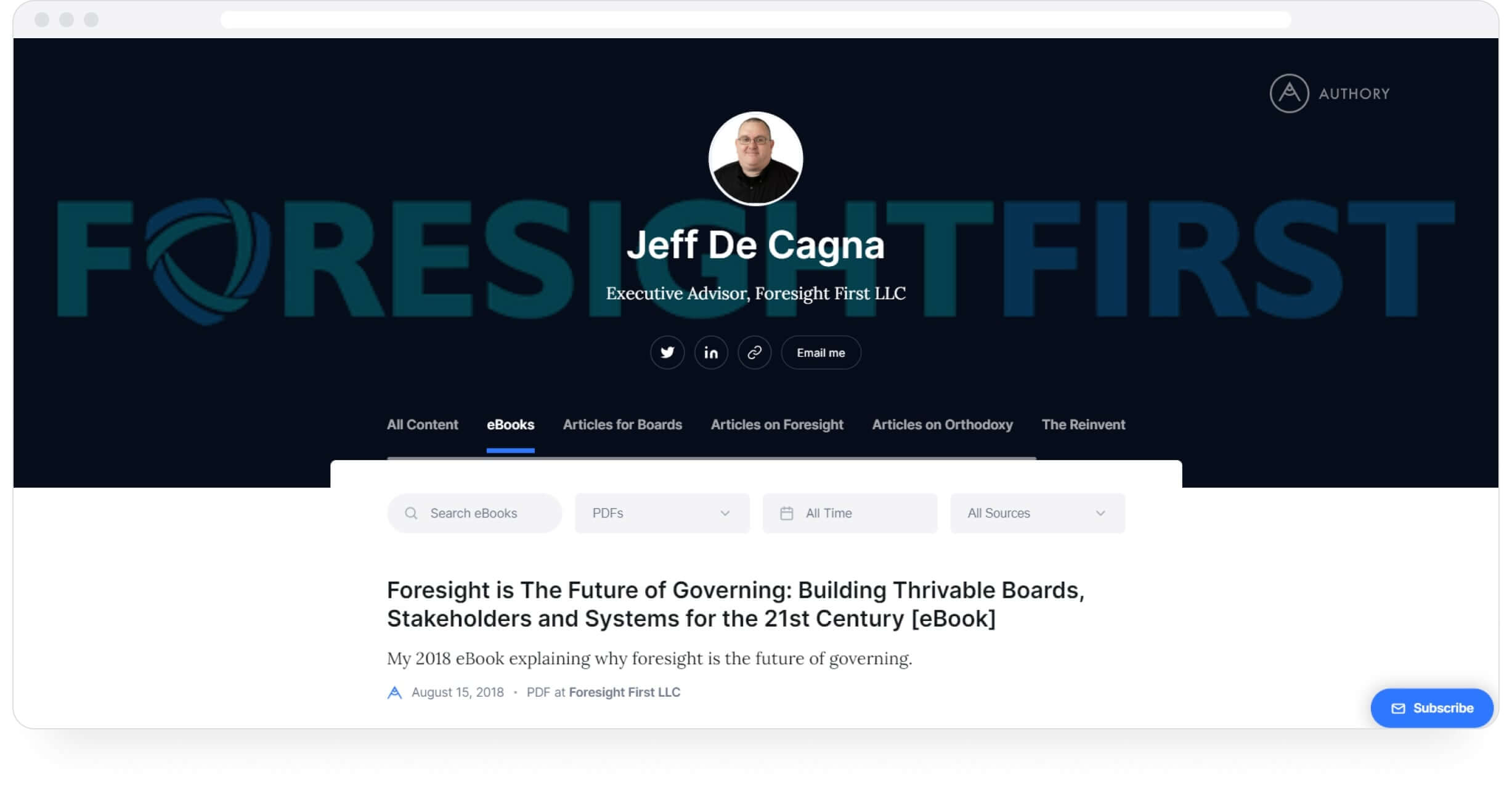
In 2017, after 15 years as Chief Strategist and Founder of Principled Innovation LLC, Jeff reinvented his consulting practice to Foresight First LLC, a firm seeking to improve the performance of association boards by “setting a new standard of stewardship, governing, and foresight.” (from his LinkedIn).
Nala Rogers
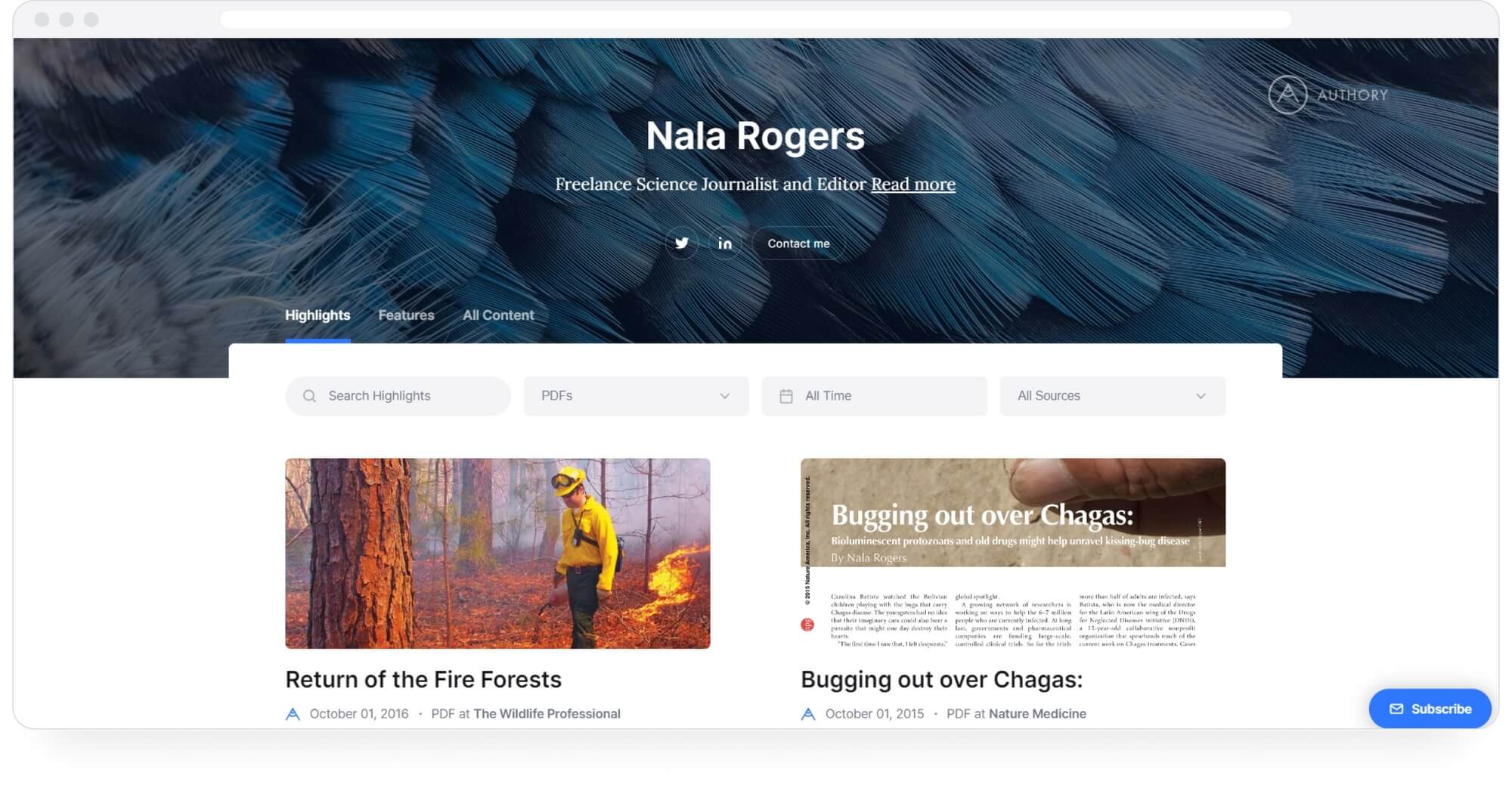
Nala's work has been published in Science, Nature, Scientific American, and Discover Magazine. She has also held the position of staff writer and editor at Inside Science, where she edited stories and covered the “Earth” and “Creature” beats. She also writes cover stories and news items for The Wildlife Society's professional magazine, The Wildlife Professional.
Joan McMillan
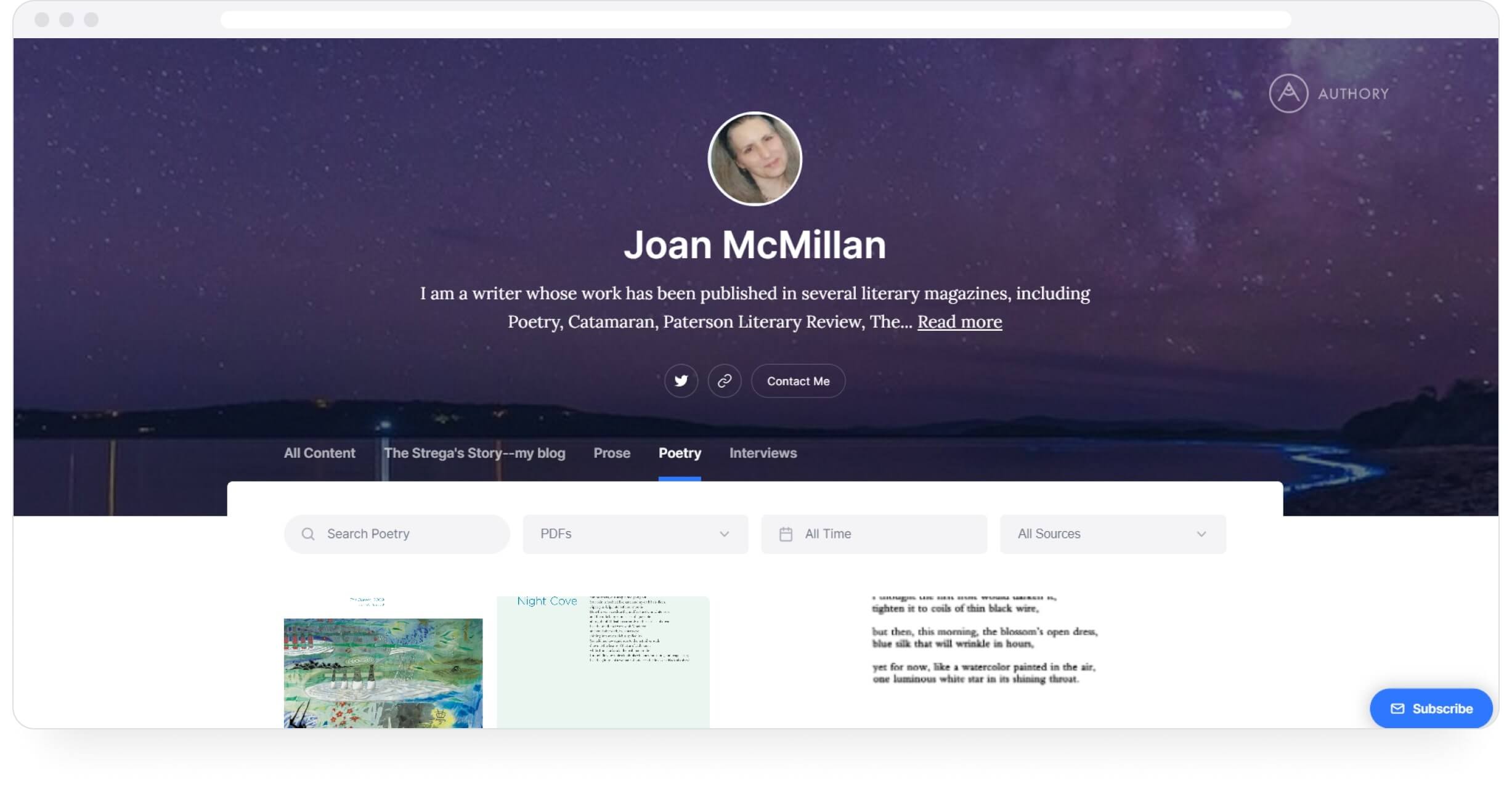
Joan is a writer whose creative work has been published across multiple literary magazines — Poetry, Catamaran, Paterson Literary Review, The Chattahoochee Review, Connotation Press, Santa Clara Review, Santa Fe Literary Review, and more. She is currently writing a romantic comedy set in her hometown of Santa Cruz.
Now let's look at how you'll create a PDF portfolio as good as the ones above. No, you don't need Adobe Acrobat for this.
How to create a PDF portfolio with very little effort (and reasonably little time)
Authory is a dedicated portfolio-building platform, which allows users to create a professional work portfolio in literally a few minutes. To create a portfolio with ALL your content (in different formats), follow the steps below:
- Sign up for Authory (for FREE) using this link.

Once I choose “Continue with Google” and enter my email ID, the tool automatically fills in the fields for my name (taken from my email data).

- I chose my profession as “Writer” and then click “Next Step.”

In the next screen, I see that Authory has already automatically found the “sources” — websites where my bylined articles are published (nytimes.com & washingtonpost.com, for example). Of course, if it has missed a source, I can add it manually (just the site URL), OR I can choose to add all my sources manually.
- Click “+ Add.” to add files.
Authory will take up to 48 hours (often less) to import every bylined article to its database. Once the process is complete, you can segment your articles, videos, podcasts, audio files, and social media posts into relevant “Collections” — think of them as folders within your Authory database.
Import and add your PDF publications
- Once you get to the dashboard, you’ll see a dialog box offering the option to enter a source (publication website). Authory will automatically import all content with your byline ever published on that site — past and future.
- You can also add PDFs manually. Navigate to the "Content" tab in your Authory account, click the "+ Add Content" button at the bottom left, and upload PDF files.
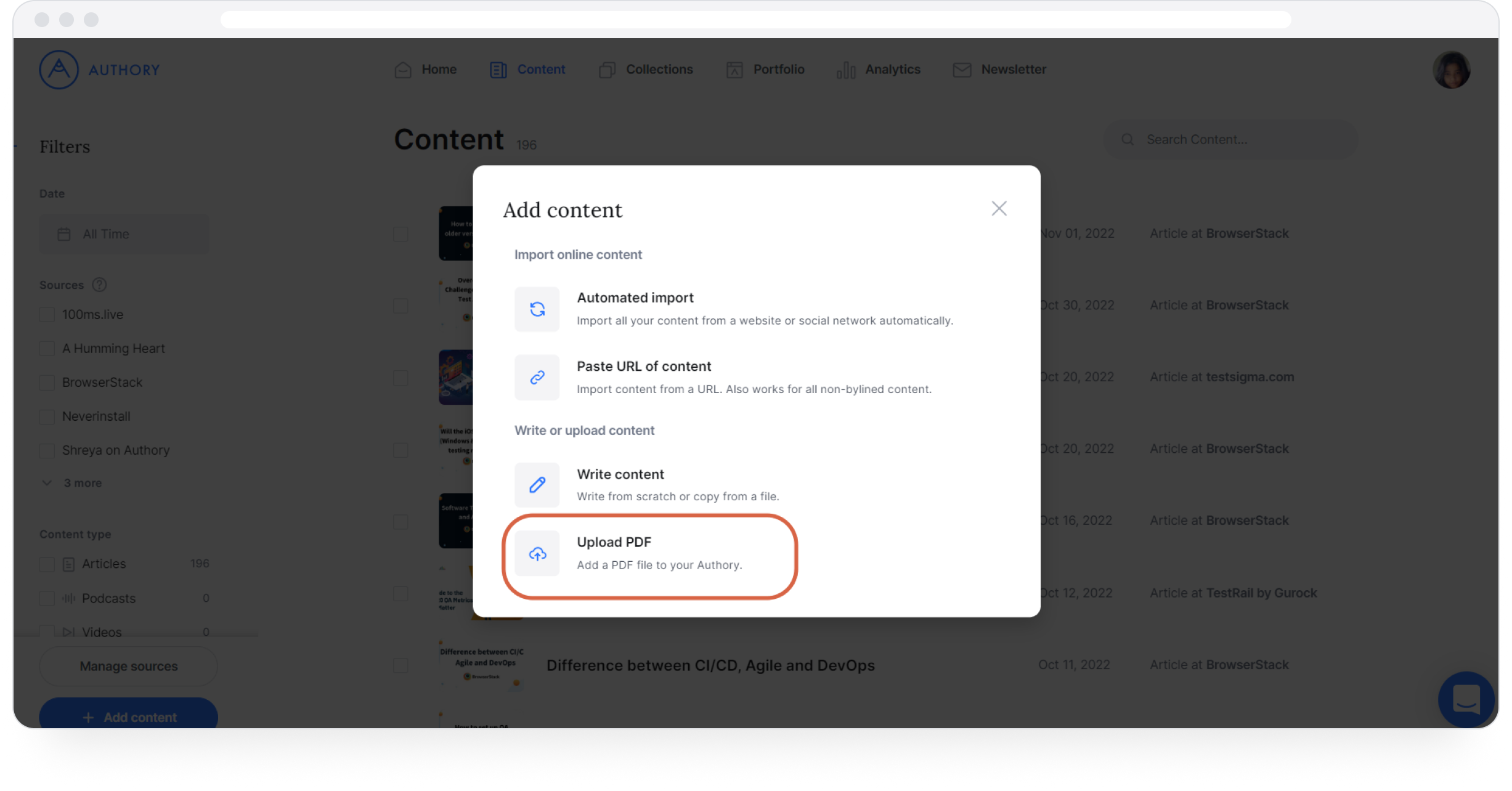
You can edit the title & description, create a new source, or add the file to an existing source.
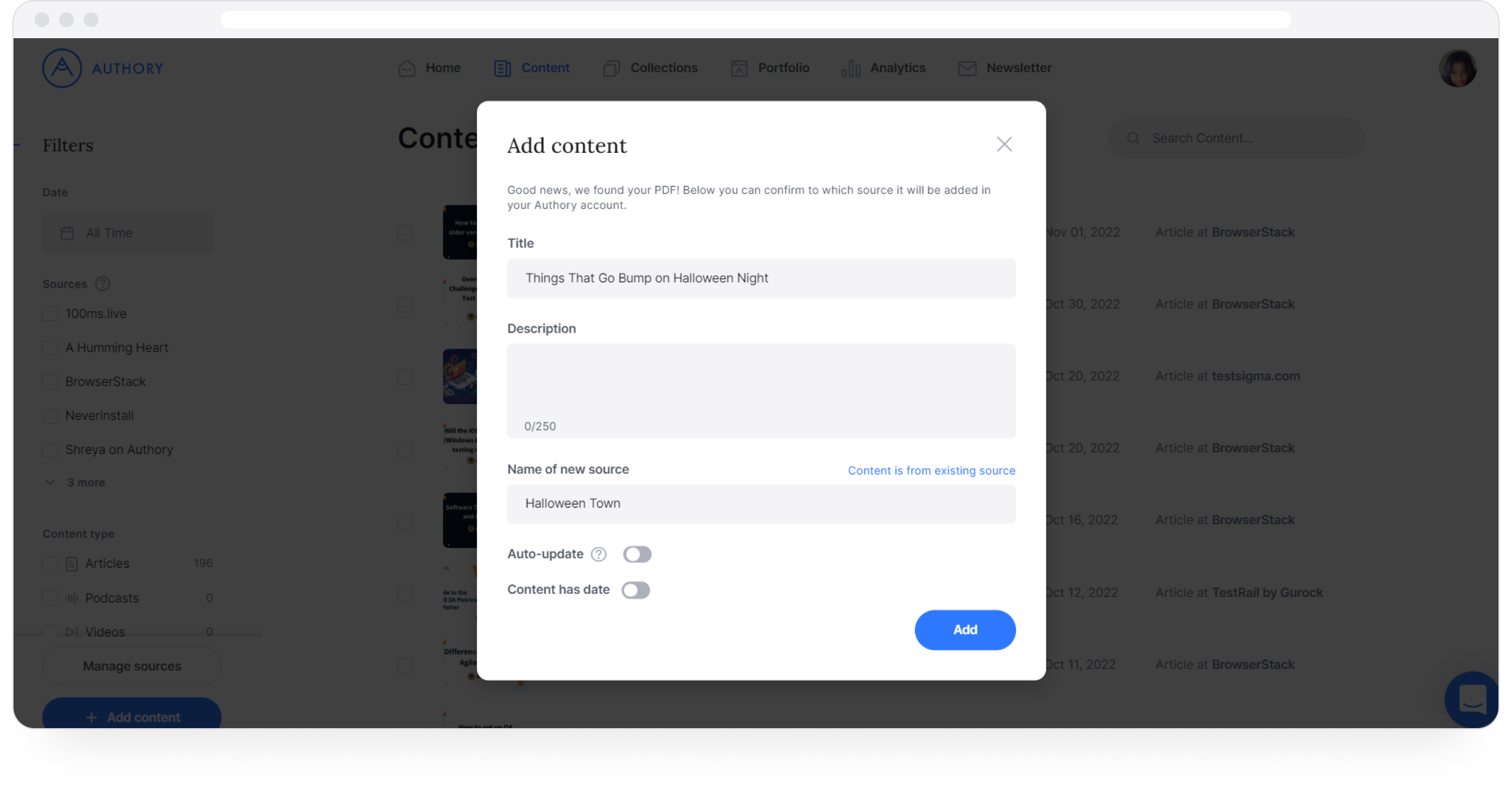
You can keep adding PDF files, as seen below:
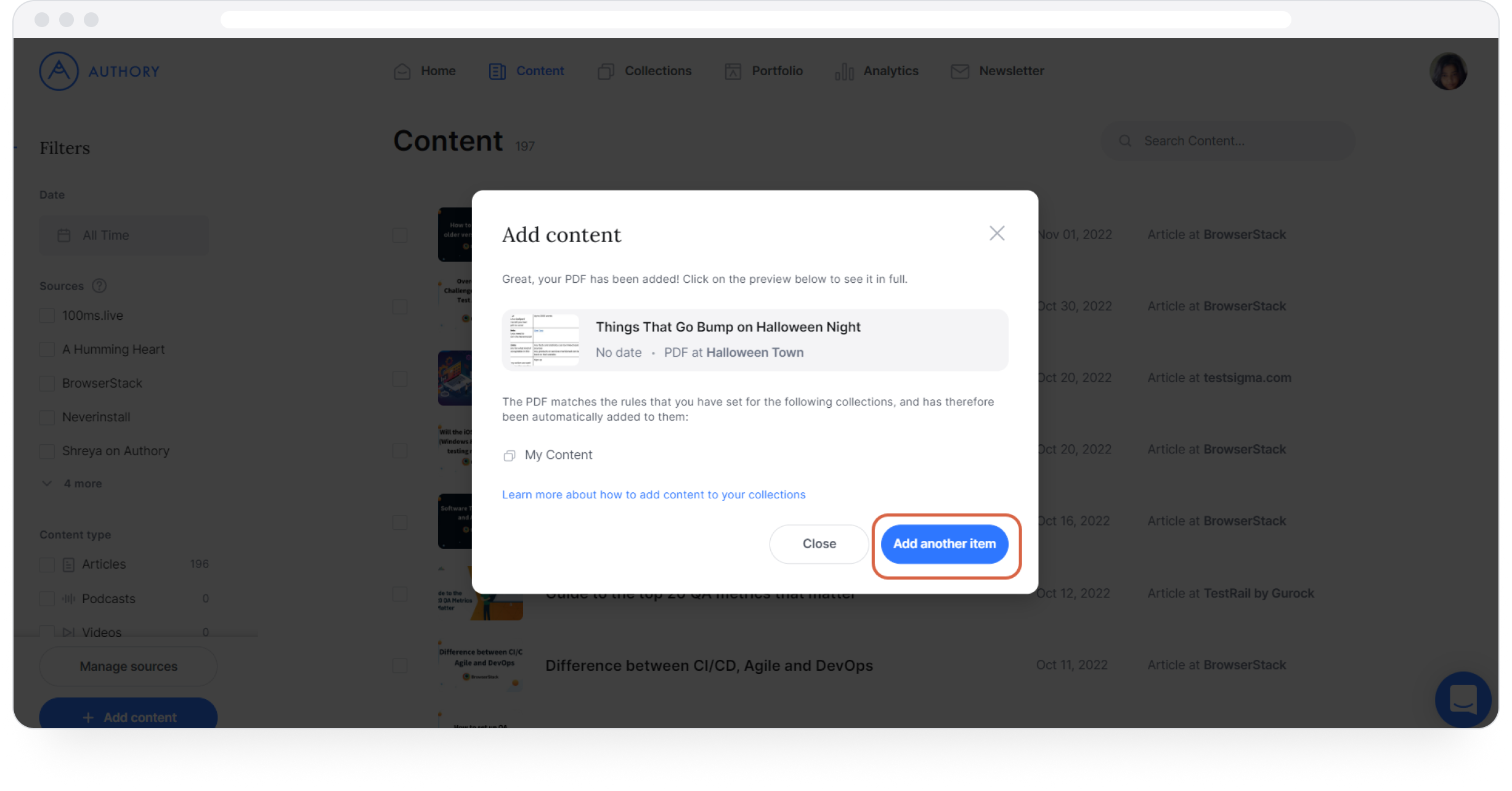
Create a PDF portfolio collection
- Go back to the "Content" tab. Select the "PDFs" checkbox at the bottom left. (I’ve blurred out the source names).
- Once the PDFs are selected, use the "Create automated collection" button on the top right to create a collection of your PDF uploads. There is no "add folder" option, but you can upload multiple PDF files at one go.
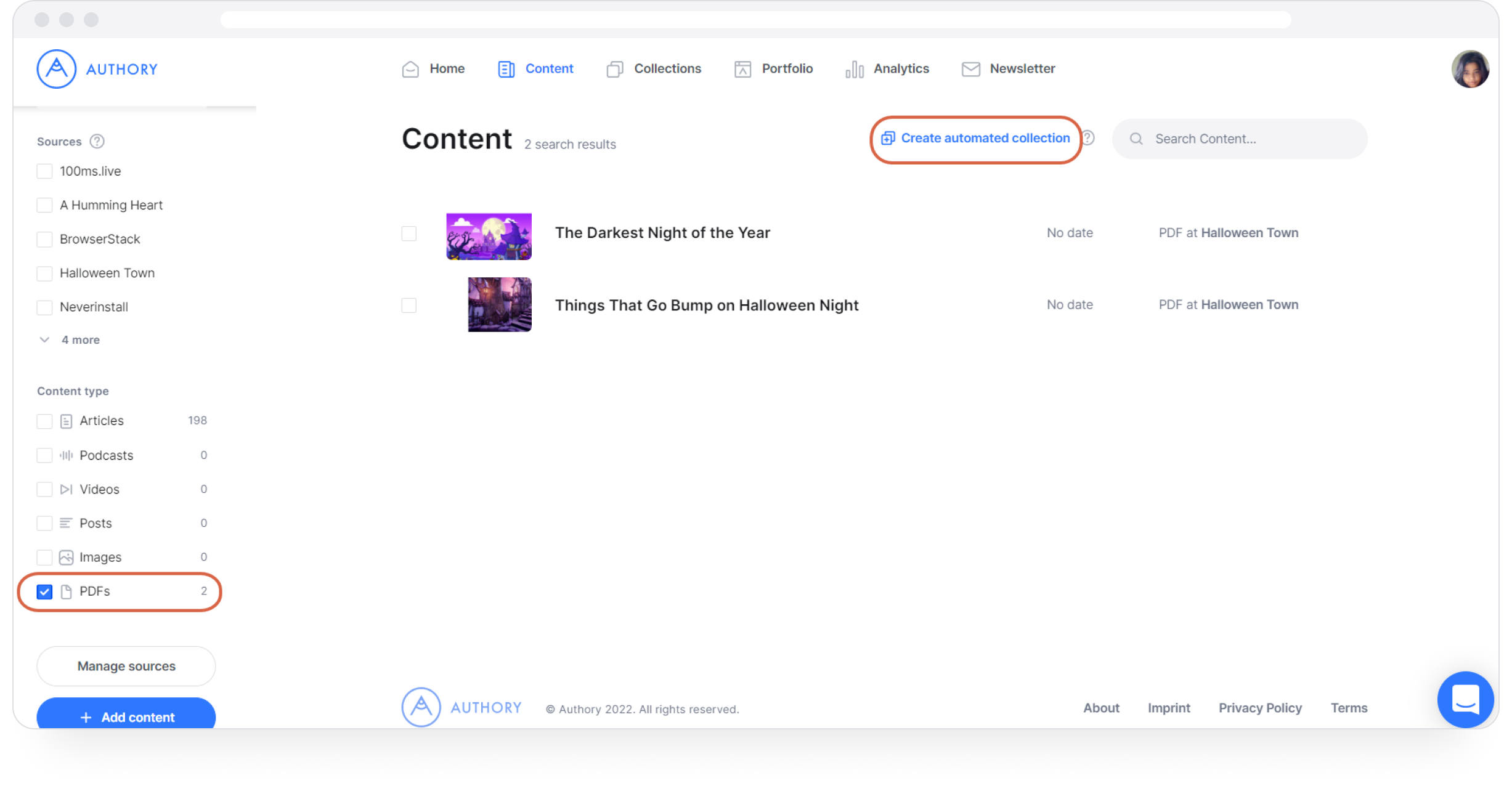
Name your collection. Add a description if you want.
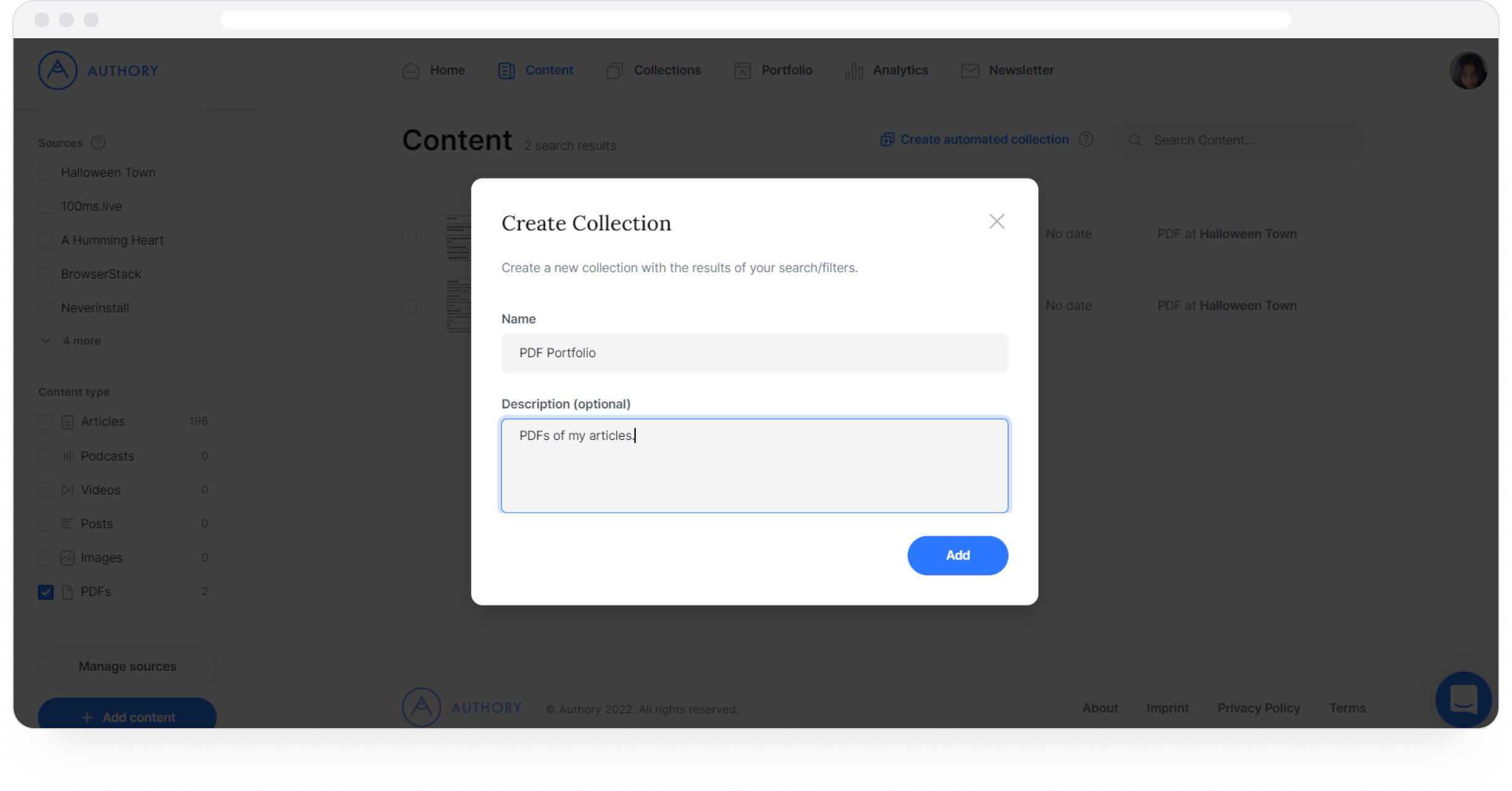
Upload all your PDFs to this collection. Once you finish, go to the "Collections" tab to see how it looks.
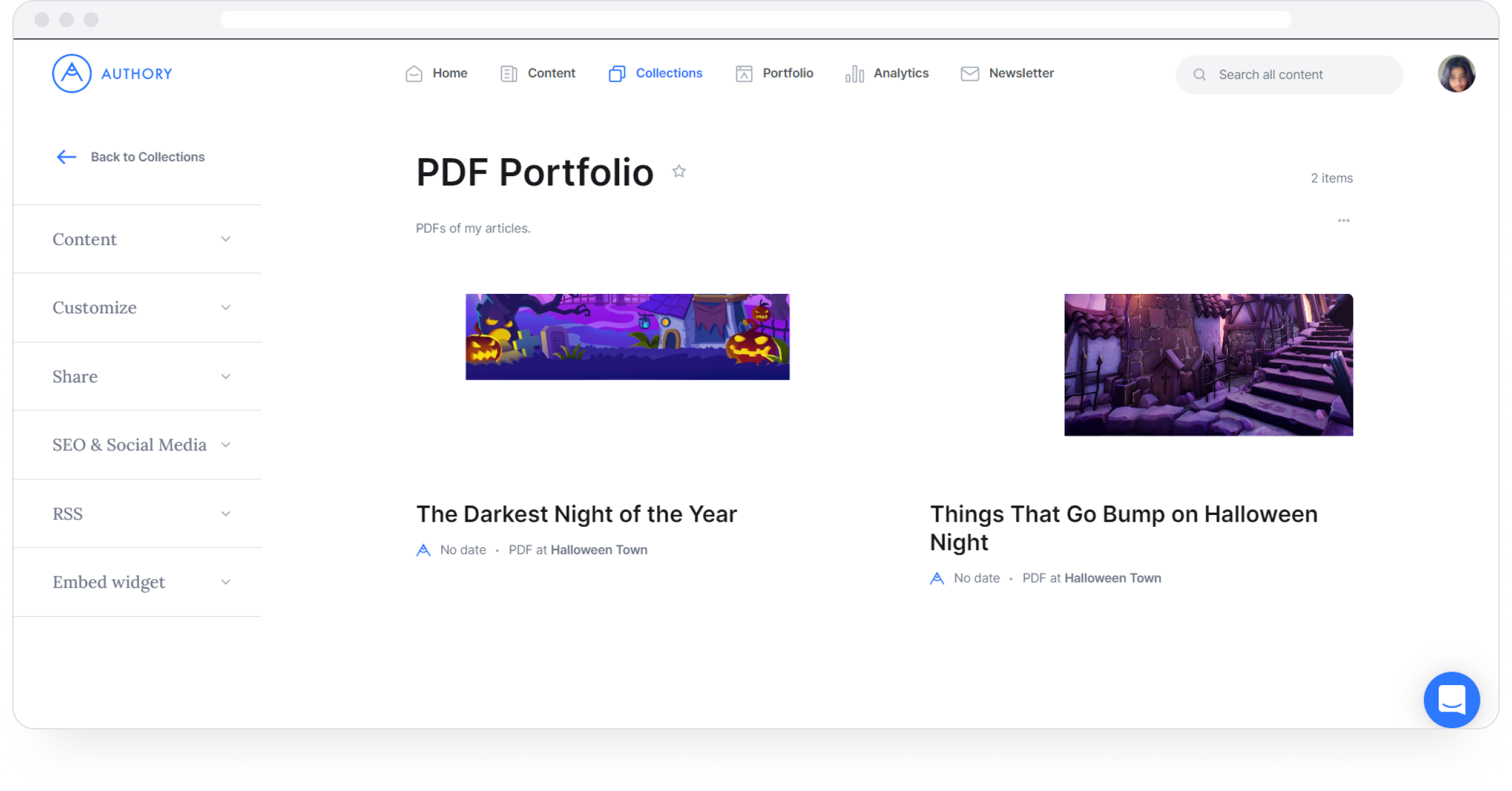
Connect the collection to your portfolio & display it
Click on the "Portfolio" tab and go to the "Content" tab on the left menu. From there, add the previously created "PDF Portfolio" collection to the portfolio.
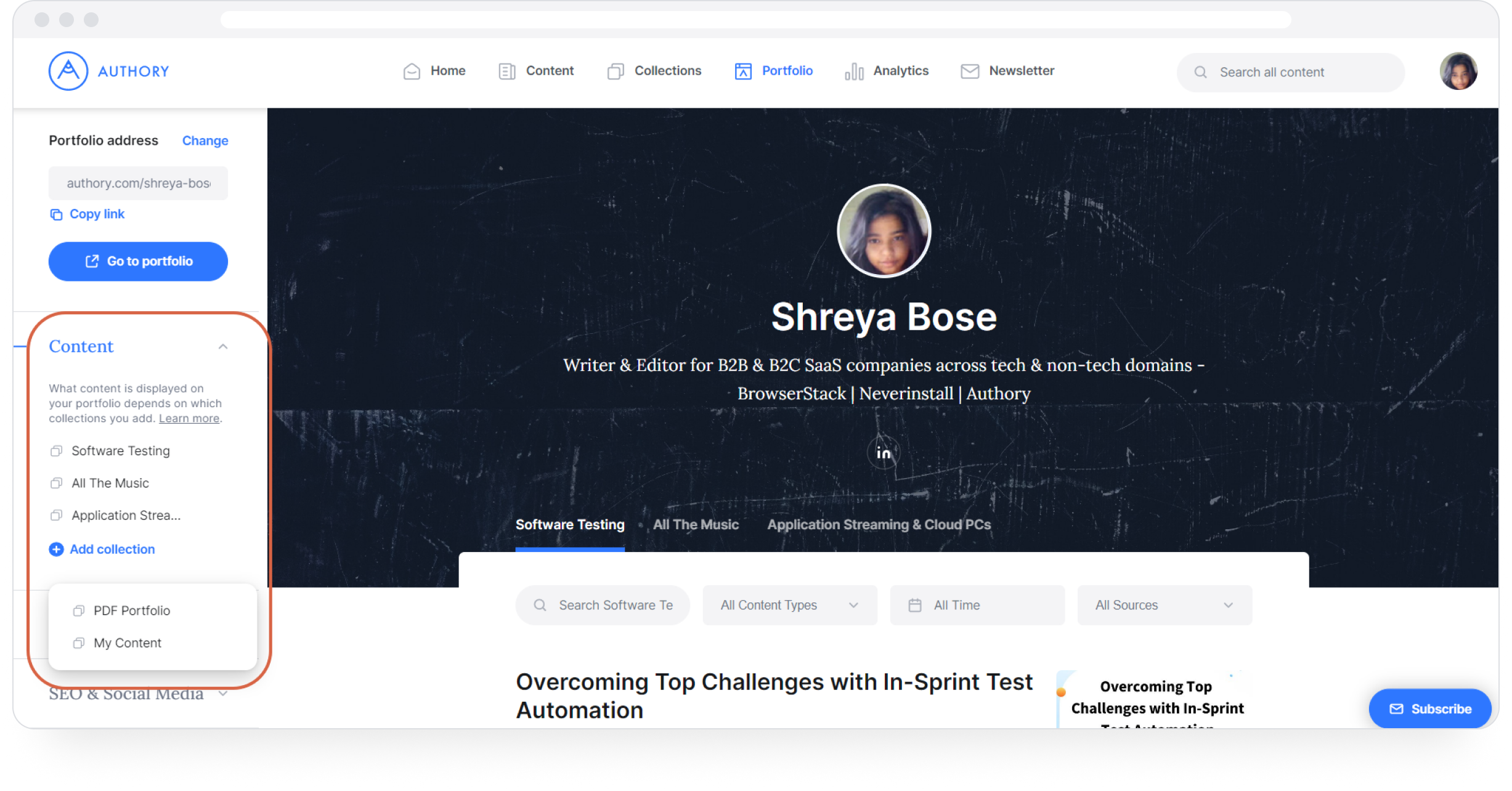
And you’re done! All documents in the PDF portfolio collection will be added as a separate tab on your portfolio. This is what it will finally look like:
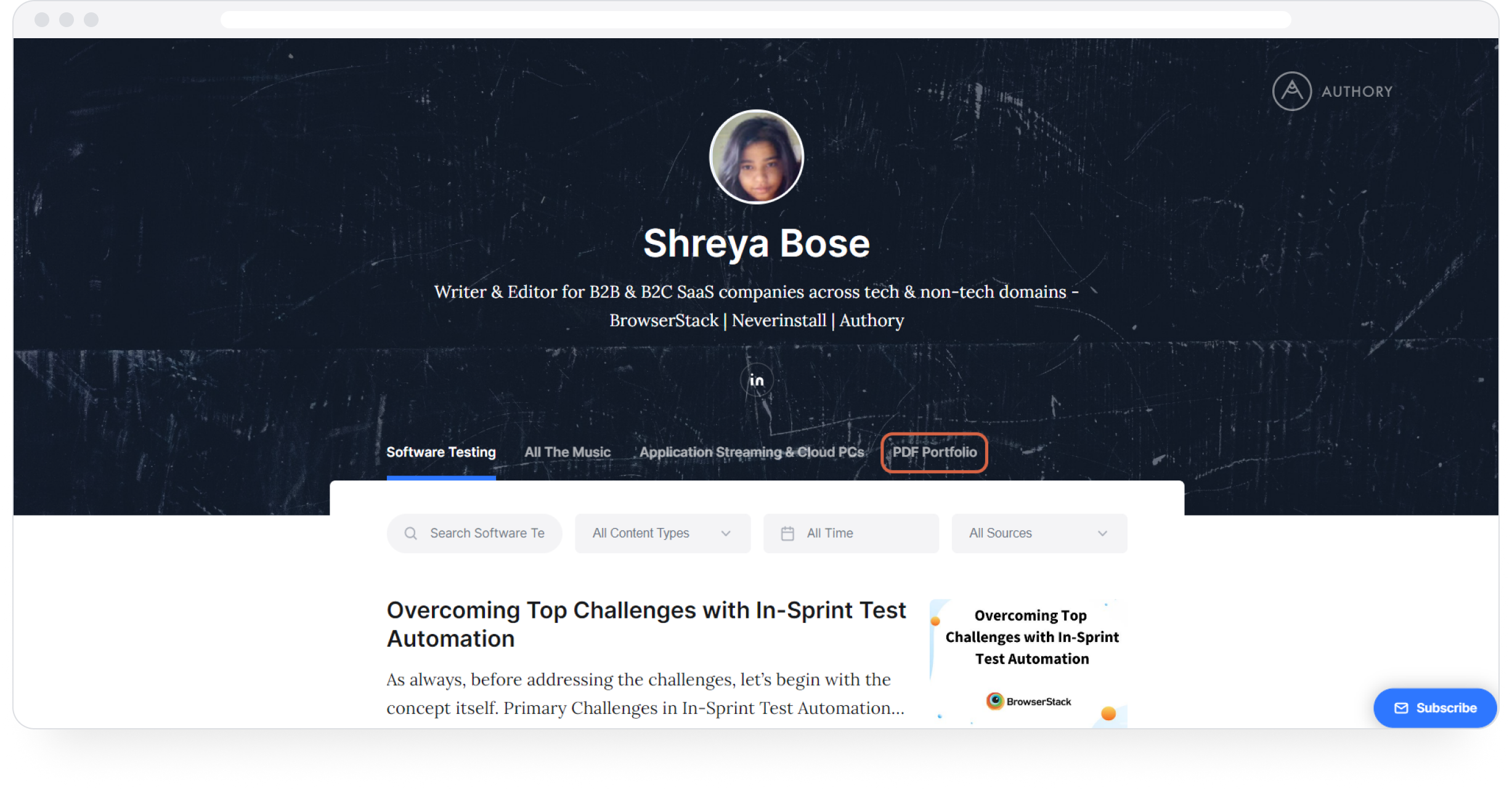
Anytime you have new PDFs, you can upload them from the add files menu. You can also delete files as you see fit anytime.
Okay, but why use Authory to create PDF portfolios?
A self-updating portfolio (no need to keep adding new work manually)
Authory will AUTOMATICALLY import a copy of every bylined piece from every site into its own database.
You don't have to track down links to your published work (especially older pieces). As long as you remember the URL of the site where your work exists, Authory will collate all your content for you in one dashboard. Authory can import content from behind most soft paywalls (as long as it is a bylined piece) and some hard paywalls.
Automated backups (never lose your content, ever)
All the content that Authory imports from different sources is saved permanently. You'll never have to worry about losing any of your published work. Even if the original website where it's published goes defunct for any reason, you'll always have a copy safely stored on Authory's server.
All backups are in the original format — text and/or media. No screenshots.
Continued importing of past and future content (less effort for a 100% updated portfolio)
Once you enter a source, Authory won't just import your existing publications. Anything you publish on the same site (after you've fed its URL into Authory) in the future will also be imported automatically. In other words, Authory will import your past and future content.
Apart from these, you also get:
- Ability to search through both your portfolio and your content database to find articles/audio/videos/multimedia files based on keywords. Prospective employers and hiring managers can use this to look for topics on your portfolio, and you can use it to find specific pieces within your Authory content bank.
- Ability to create a custom domain with a click.
- All imported content can be downloaded as high-res PDFs or exportable as HTML files — no lock-in period.
- Get a custom domain and personalize your portfolio even further.
- Multiple, low-effort options for customization to make your portfolio visually appealing and easy to navigate.
- In-built analytics that provides real numbers on content performance (engagement, readership) across the web and popular social media sites every 30 days. You get to see how your readers/viewers are responding to your work.
- Allows creation of newsletters with a couple of clicks. After setup, Authory will automatically send your newly published content to subscribers.
- Widgets to display your personal portfolio on other sites, such as your personal website (if you have one).
Get started with Authory for free and see if it helps you with creating the PDF portfolio files your career deserves!




